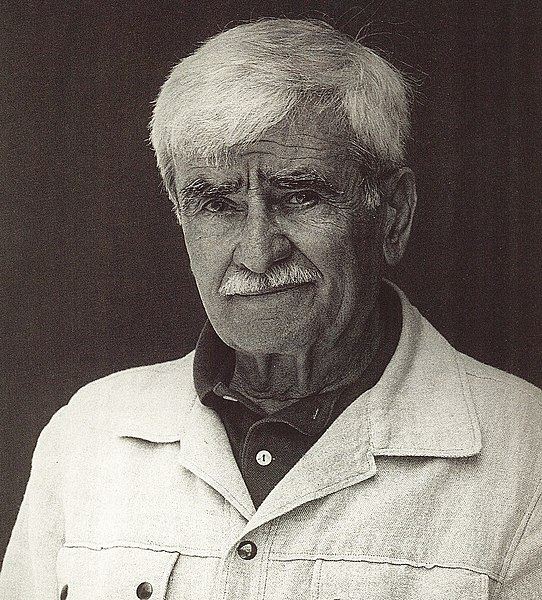
Alberto Burri
Alberto Burri, an Italian artist, devoted his entire career to erasing the boundaries between sculpture and painting. He described his work as a quest for elements that served as a surface, material, and idea.
Biography of Alberto Burri
Alberto Burri, born in Città di Castello, Umbria, in 1915, was the son of a wine merchant and an elementary school teacher. His early aspirations revolved around becoming a doctor, and he eventually enrolled at the University of Perugia, where he earned a medical degree with a specialization in tropical medicine. However, his life took an unexpected turn when Italy entered World War II. Burri was drafted as a medic and dispatched to Libya to support the ground forces stationed there. For the next three years, he served his country until May 8, 1943, when the Axis forces were defeated at El Alamein.
Subsequently, Burri's unit was captured in Tunisia, and he found himself interned at the Camp Hereford prisoner of war camp in Hereford, Texas. It was during this period that the artist began painting. The experience of being a prisoner of war in an American camp led to a profound transformation in Burri. Rather than succumbing to despair, he embarked on a lifelong artistic journey. He utilized the limited materials available to him, transforming them into artworks infused with a strong sense of turmoil and violence.
Upon returning to Italy, Alberto Burri made the pivotal decision to resign fully from his medical career and pursue art instead.
Following his release in 1946, the artist relocated to Rome and collaborated with his cousin, providing him access to Rome's elite art circles. Alongside the wartime impact on his art, Burri drew significant influence from Dada and Surrealism, greatly shaping his artistic approach. He frequently traveled to Paris to study how French artists of the past and present addressed relief sculpture and painting.
Alberto Burri earned widespread recognition as one of the most significant artists of his generation. He received numerous accolades, including the Premio dell'Ariete in Milan, the UNESCO Prize at the São Paulo Biennial, the Critics' Prize at the Venice Biennale, and the Order of Merit of the Italian Republic. Furthermore, his hometown of Città di Castello honored him with a large permanent museum dedicated to his works.
Alberto Burri's Art Style
Burri's initial foray into painting at the prison camp consisted of desert landscapes inspired by the views he encountered and still-life compositions. According to the renowned American photographer and art critic Milton Gendel, as documented in a 1954 issue of ArtNews, Alberto's early post-war works primarily depicted nostalgic Umbrian landscapes and figures.
Upon his return to Italy, Burri continued to use the old burlap sacks he had brought back from the prisoner of war camp, selecting them as his canvas material. This choice aimed to preserve the underlying theme of violence and war in his art. Burlap served as a powerful symbol, being an inexpensive and robust material extensively used for various wartime purposes such as tents, supplies, sandbags, and camouflage netting.
As his career matured, Burri explored the use of unconventional materials like wood, tar, plastic, PVC adhesives, cellotex, and fabric. In the 1970s, he began the creation of cracked paintings, also known as "cretti." This underscored his persistent focus on the materiality of his works, evident in his choice to title pieces based on the substances used or the methods employed to achieve desired effects. His techniques encompassed cutting, tearing, melting, and stitching the surface, often leaving it punctuated with holes.
In the later stages of his career, Burri delved into land art. One of his most famous projects in this genre was the "Grande Cretto" in the small town of Gibellina, Sicily. This monumental endeavor covered an area exceeding 120,000 square meters, encompassing much of the old town ravaged by an earthquake.
Years:
Born in 1915
Country:
Italy, Città di Castello
Gallery: